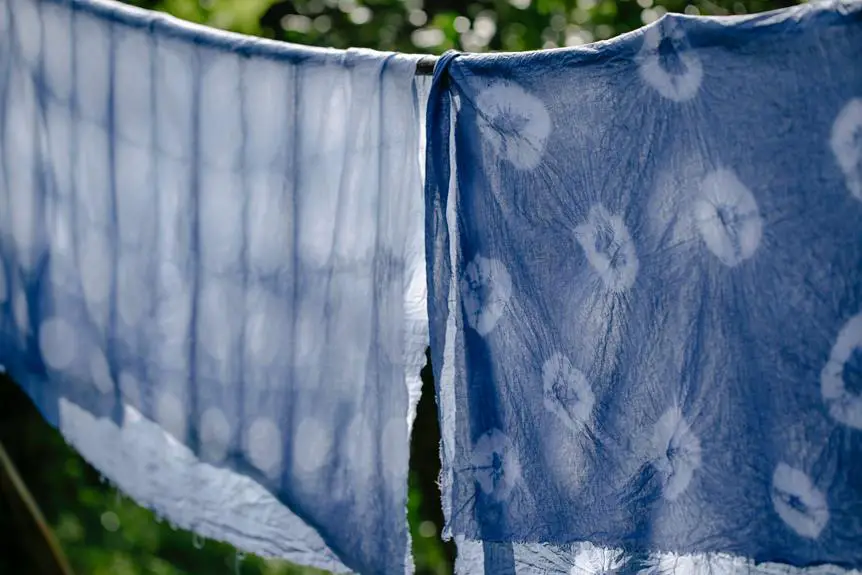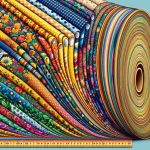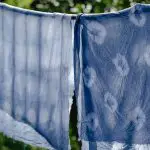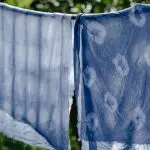When you first start sewing, it can feel like you're diving into a world of bolts and yards. Understanding the ins and outs of fabric bolts is crucial for any master of the craft.
In this guide, we'll delve into the essential question: How many yards are in a bolt of fabric? Get ready to master the standard yardage in a bolt and learn why it's vital to your sewing prowess.
We'll also explore how knowing your bolt yardage can help you plan and maximize your projects. So, let's unravel the mysteries of fabric bolts and ensure you're always ahead of the curve in your sewing journey.
Key Takeaways
- Fabric bolts are used to store and sell fabric and are typically wrapped around a cardboard tube and covered with paper or plastic.
- The standard yardage in a fabric bolt can vary based on fabric type, width, and weight, with common measurements ranging from 8 to 15 yards.
- Knowing the yardage in a fabric bolt is important for project planning to prevent running out of fabric or purchasing unnecessary amounts.
- Maximizing the benefits of bolt yardage can be achieved through strategic layout of pattern pieces, considering fabric prints or nap, saving fabric scraps for future projects, and maximizing bolt yardage efficiency to reduce overall fabric wastage.
Understanding Fabric Bolts
To understand fabric bolts, you should know that they typically contain a specific number of yards of fabric. Fabric bolts are the way in which fabric is typically stored and sold. They're usually wrapped around a sturdy cardboard tube and then wrapped in paper or plastic to protect the fabric.
When it comes to fabric types, bolts are commonly used to store a wide variety of fabrics, from delicate lace to heavy denim. It's essential to handle fabric bolts with care, especially when lifting or moving them, to prevent any damage to the fabric. Bolt storage is also crucial to maintain the quality of the fabric.
It's best to store bolts in a cool, dry place, away from direct sunlight, to prevent any fading or damage. Additionally, it's important to consider the fabric weight when handling bolts, as heavier fabrics may require more caution when moving or storing.
Understanding the ins and outs of fabric bolts will help you master the art of working with different types of fabric.
Standard Yardage in a Bolt
Fabric bolts typically contain a standard number of yards of fabric, providing a convenient and efficient way to store and sell various types of fabric. When dealing with fabric bolts, it's essential to understand the standard yardage and how it impacts your fabric projects.
The standard yardage in a bolt can vary based on fabric type, width, and weight. Common yardage measurements in a bolt range from 8 to 15 yards, with some specialty fabrics offering even more in a single bolt. Understanding the bolt length is crucial when determining fabric quantity for your projects and estimating fabric pricing.
The fabric composition, construction, and weight also play a role in the yardage measurements. Heavier fabrics often have fewer yards in a bolt compared to lighter, thinner fabrics due to the difference in bulk. Additionally, the standard yardage in a bolt can affect how the fabric is stored and transported. Longer bolts may require more storage space and careful handling to prevent damage.
Being aware of the standard yardage in a bolt allows you to plan and purchase the right amount of fabric for your sewing, quilting, or crafting needs.
Importance of Knowing Yardage
Knowing the yardage in a fabric bolt is essential for planning and purchasing the right amount of fabric for your sewing, quilting, or crafting projects. Understanding the fabric usage and cost efficiency can save you both time and money. By knowing how much fabric is on a bolt, you can accurately estimate the amount needed for your project, preventing the frustration of running out of fabric halfway through. This knowledge also helps in avoiding unnecessary waste by purchasing more fabric than required.
Consider the following table for a quick reference to understand the importance of knowing yardage:
| Importance of Knowing Yardage | Benefits |
|---|---|
| Accurate Fabric Usage | Prevents running out of fabric |
| Cost Efficiency | Avoids unnecessary waste |
| Project Planning | Saves time and money |
| Environmental Impact | Reduces fabric wastage |
Understanding the yardage in a fabric bolt allows for better project planning, cost management, and environmental sustainability. It empowers you to make informed decisions, ensuring that you have the right amount of fabric for your creations while maximizing cost efficiency.
Planning Projects With Bolt Yardage
How do you ensure that you accurately plan your sewing, quilting, or crafting projects using the yardage in a fabric bolt? Project estimation and fabric selection are crucial steps in ensuring that you have the right amount of fabric for your project.
When estimating your project, it's essential to have a clear idea of the pattern or design you'll be working on. Take accurate measurements and consider any additional fabric needed for things like pattern matching, directional prints, or creating borders.
When it comes to fabric selection, understanding the width of the fabric on the bolt is key. Most standard quilting cotton bolts are 44 inches wide, while apparel fabrics can vary from 45 to 60 inches wide. Knowing the width will help you calculate how much yardage you need.
For larger projects or if you're unsure about the yardage needed, consider taking your project's measurements and pattern requirements to a fabric store where a knowledgeable staff member can assist you in determining the appropriate yardage.
Planning your projects with bolt yardage in mind will help you avoid running short on fabric and ensure that your creations turn out just as you envisioned.
Maximizing Benefits of Bolt Yardage
To make the most of the yardage on a fabric bolt, you can maximize efficiency by carefully planning your cutting layout to minimize waste and ensure you have enough fabric for future projects. Achieving cutting efficiency not only reduces wastage but also maximizes the utility of the fabric, leading to significant cost savings.
Here are some tips to help you make the most of your bolt yardage:
- Strategic Layout: When laying out your pattern pieces, take the time to arrange them in a way that minimizes the amount of fabric you need to cut. This can help you make the most of every inch of fabric on the bolt.
- Pattern Placement: Consider the direction of the fabric's print or nap when laying out your pattern pieces. By placing the pieces strategically, you can minimize the amount of fabric needed while ensuring that the design elements align properly.
- Save Scraps: Don't discard your fabric scraps; keep them organized by color and size. These scraps can often be used for small projects or as accents in future sewing endeavors, maximizing the value of your initial investment.
Frequently Asked Questions
Can I Mix and Match Different Fabrics From Different Bolts in a Single Project?
Yes, you can mix and match different fabrics from different bolts in a single project. Just ensure that the fabrics are suitable for the project's guidelines and work well together in terms of color, weight, and texture.
Are There Any Special Considerations for Storing Fabric Bolts to Maintain Their Quality?
When storing fabric, it's important to maintain quality by protecting it from sunlight, moisture, and dust. Proper storage will preserve the integrity of the fabric for your projects and ensure a professional finish.
Are There Any Common Mistakes to Avoid When Working With Fabric Bolts?
When working with fabric bolts, common mistakes to avoid include not properly aligning the fabric grain, rushing through cutting, and not allowing for extra fabric for shrinkage. Proper cutting techniques involve precise measurements and sharp tools.
Can I Request a Custom Yardage When Purchasing Fabric Bolts From a Supplier?
When purchasing fabric bolts from a supplier, you can request custom yardage. Many suppliers offer flexibility to accommodate your specific needs. This allows you to tailor your orders to your exact requirements, ensuring you have the right amount of fabric for your project.
Are There Any Eco-Friendly Options for Fabric Bolts?
You can explore eco-friendly options for fabric bolts by choosing sustainable textiles. Consider the environmental impact of fabric production and opt for materials that are ethically sourced and have a minimal carbon footprint.
- Tetron Fabric for Marine Applications: Durability and Use Cases - June 18, 2025
- Tetron Fabric for Outdoor Furniture: Weather Resistance and Care - June 18, 2025
- Tetron Fabric for Wall Coverings: Style and Application Tips - June 18, 2025






